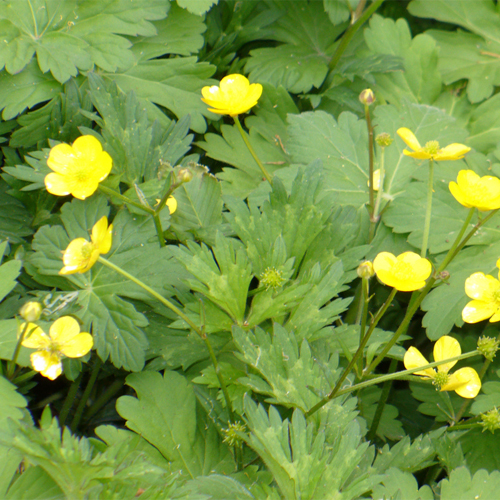

Thumbnail pictures have links to larger photographs and information about each of the

Many species in this family have five petals, but some ( LesserĬelandine, now Ficaria vernabut until recently better known as Ranunculus ficaria, is an example) have a variable number up to 12 or more. There are nearly 2400 species in the Buttercup family, which includes globe flowers as well as the various Ranunculus species. Meadow buttercup Ranunculus acris is plentiful in meadows and on roadside verges, particularly on neutral to alkaline soils, while the bulbous buttercup Ranunculus bulbosus is a farmland species.Ranunculaceae - wildflowers of the Buttercup family The specific epithet repens means 'creeping'. It can be very frustrating when you’re trying to maintain a nice green yard but all you see is yellow flowers and creeping buttercup plants that seem to take over. Ranunculus repens is a species in the genus Ranunculus which contains. The most likely explanation is that both frogs and Ranunculus wildflower species are usually found in damp places. Creeping buttercups are considered one of the most difficult weeds to get rid of in your lawn. Ranunculus repens (creeping buttercup) is a perennial with dark yellow flowers. The genus name Ranunculus comes from the Latin rana, meaning frog, while the suffix - culus indicates the diminutive form - hence Ranunculus means 'little frog'. Creeping buttercup, a King County Weed of Concern, is a low-growing perennial with creeping stolons that's found in rural and urban areas throughout King County, such as pastures, farmlands, natural wetlands, city gardens, and lawns.
#Creeping buttercup family professional#
(We strongly advise against eating or using as medicines any plants without first obtaining qualified professional advice.) Etymology Despite these safety concerns, buttercups are sometimes used in herbal treatments for arthritis, bronchitis and several other ailments. There is a risk to farm animals if they are left too long in a buttercup meadow, because when there is no grass left they might have to settle for buttercups, and become very 'unsettled' as a result. The acrid taste of all common buttercup species except the Goldilocks Buttercup Ranunculus auricomus seems to be sufficient deterrent, as there have been only a few cases of serious poisoning. Usesīuttercups contains an irritant latex that can cause very unpleasant reactions in farm animals and in people. Ranunculus repens blooms in Britain and Ireland from May until October and is generally at its most evident from May to July. It's in the scientific species name, of course: these are wildflowers that spread mainly via creeping runners, known as stolons, in wet meadows, woodland edges and other damp shady places including sheltered spots under shrubs and leafy vegetables in gardens. The pictures of Meadow Buttercup shown on this page were taken in West Wales during May and June. This buttercup is also present in many other parts of the world as an introduced and widely naturalised species. Widespread and common throughout Britain, Ireland and most of mainland Europe, Ranunculus repens is also native to North Africa and Asia. This is Britain's only stoloniferous buttercup, and the very obvious feature of rooting unners is all you really need to see in order to separate it from other common buttercup species such as the Meadow Buttercup. This perennial has three-lobed hairy leaves and five-petalled (exceptionally with up to seven petals) yellow flowers 2 to 3cm in diameter are borne in small clusters. One of the best known of wildflowers, the Creeping Buttercup is a low-growing, attractive wildflower.Ĭreeping Buttercup usually grows to a height of about 30cm. Who is not stopped in their tracks by the sight of a beautiful buttercup meadow? Children today still play the game of finding out if their playmates like butter by holding a buttercup flower under their chin if the golden yellow is reflected on the skin, the answer is 'Yes!' Description Phylum: Magnoliophyta - Class: Equisetopsida - Order: Ranunculales - Family: Ranunculaceae Ranunculus is the family name of buttercups, which literally translated means little frog as most buttercup species are found near the edges of water or.


 0 kommentar(er)
0 kommentar(er)
